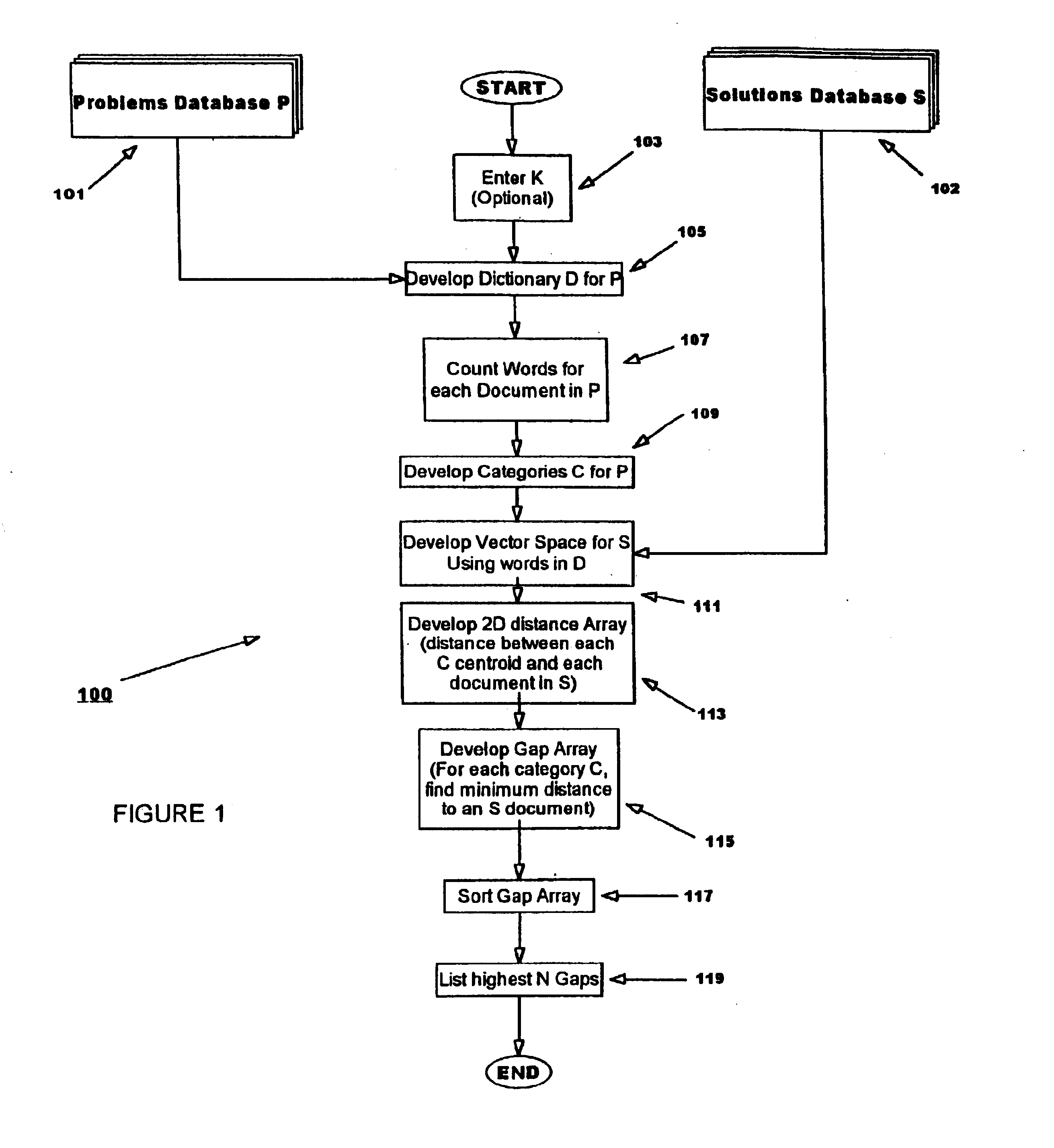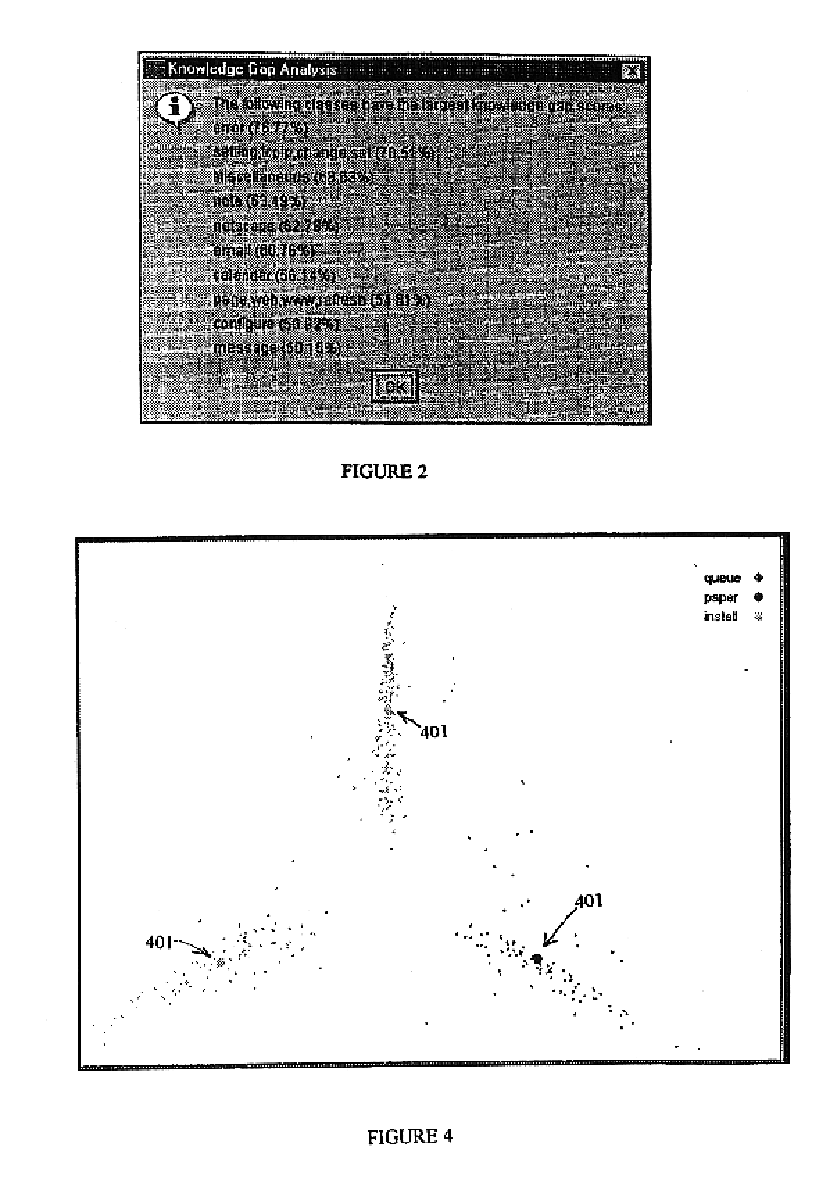Method and apparatus for discovering knowledge gaps between problems and solutions in text databases
a technology of knowledge gaps and databases, applied in the field of methods and apparatus for discovering knowledge gaps between problems and solutions in text databases, can solve the problems of large high labor intensity of human helpdesk operations, and inability to meet the needs of large-scale helpdesk logs and skbs
- Summary
- Abstract
- Description
- Claims
- Application Information
AI Technical Summary
Benefits of technology
Problems solved by technology
Method used
Image
Examples
second embodiment
A second embodiment of the invention considers that another important component in determining the gap between a cluster and a solution document is the cohesion of the cluster. The cohesion of a cluster, c, is calculated by a metric which is analogous to the standard deviation metric for random variables.
cohesion (c)=((.SIGMA..sub.x.epsilon.c cos(centroid(c),x)) / .vertline.c.vertline.).sup.1 / 2 (Eqn. 2)
The distance of each cluster in the problems set categorization from its corresponding most similar solution document divided by the cohesion of the cluster is calculated and stored as a g score.
g(c)=(MAX.sub.x.epsilon.solutions (cos(centroid(c),x))) / cohesion(c) (Eqn. 3)
Note that the maximum cosine distance to select the "most similar" document is used because cosine distance returns a value of 1.0 Float for identical documents and 0.0 Float for completely distinct documents. As the g-score increases, therefore, the likelihood of a matching solution document to the cluster to also incre...
PUM
 Login to View More
Login to View More Abstract
Description
Claims
Application Information
 Login to View More
Login to View More - R&D
- Intellectual Property
- Life Sciences
- Materials
- Tech Scout
- Unparalleled Data Quality
- Higher Quality Content
- 60% Fewer Hallucinations
Browse by: Latest US Patents, China's latest patents, Technical Efficacy Thesaurus, Application Domain, Technology Topic, Popular Technical Reports.
© 2025 PatSnap. All rights reserved.Legal|Privacy policy|Modern Slavery Act Transparency Statement|Sitemap|About US| Contact US: help@patsnap.com



